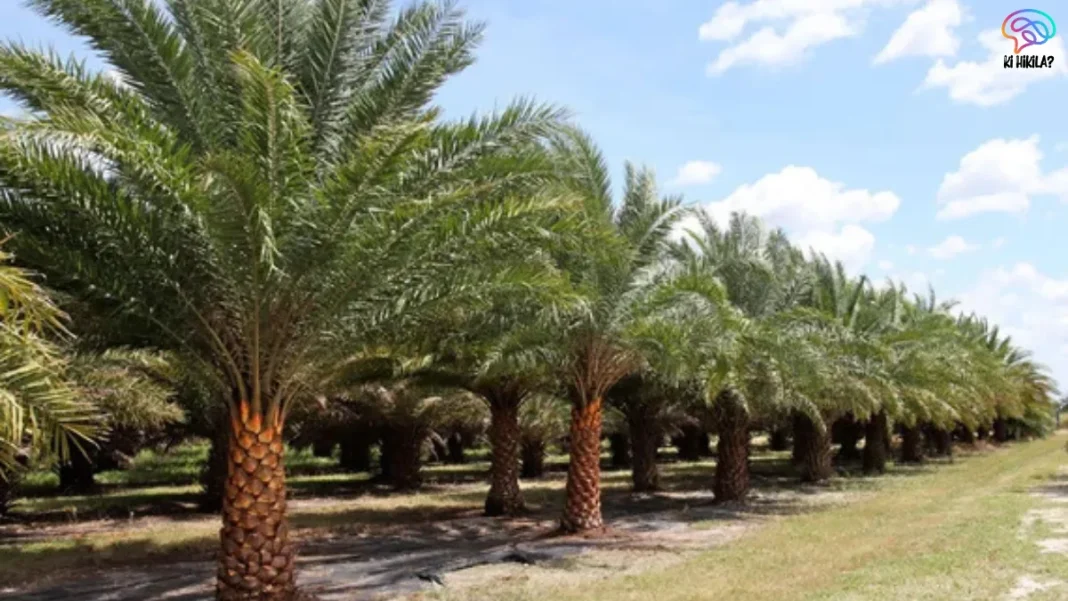Indian Phoenix Palms have become the focus of groundbreaking botanical research, reshaping centuries of plant classification. Recent studies by the Jawaharlal Nehru Tropical Botanic Garden and Research Institute (JNTBGRI) and the Botanical Survey of India (BSI) have not only uncovered a brand-new species of palm in India but also reclassified several existing ones. The findings, published in the journal Phytotaxa, highlight how modern science combined with 17th-century botanical records can resolve long-standing confusion about palm species across the Indian subcontinent.
Revisiting the Katou-Indel Palm in Hortus Malabaricus
The story of Indian Phoenix Palms goes back to the 17th century when Dutch governor Hendrik van Rheede compiled Hortus Malabaricus, a monumental botanical treatise on the flora of the Malabar Coast in Kerala. This work, created with the assistance of local physician Itty Achudan and several scholars, documented hundreds of medicinal plants. Among them was a palm called “Katou-Indel.”
In the 19th century, William Roxburgh, often called the “Father of Indian Botany,” identified Katou-Indel as Phoenix sylvestris, commonly known as the wild date palm. However, confusion persisted for centuries as similar-looking palms across India, Sri Lanka, and neighboring regions were often misclassified under different names.
Recent Scientific Investigations

Modern botanists from JNTBGRI and BSI revisited these records with advanced taxonomic tools. Their research confirmed that palms growing in Kerala and Sri Lanka indeed belong to Phoenix sylvestris. Moreover, they reclassified three species once considered separate—Phoenix pusilla, Phoenix farinifera, and Phoenix zeylanica—as synonyms of Phoenix sylvestris.
This clarification has streamlined the classification of Indian Phoenix Palms, bringing accuracy to botanical records and reducing confusion for researchers, horticulturists, and conservationists.
Discovery of a New Phoenix Species
The most exciting revelation from this research was the identification of a completely new palm species, Phoenix roxburghii, found across India’s eastern coast, Bangladesh, Gujarat, Rajasthan, and even into parts of Pakistan. Named in honor of William Roxburgh, this species differs from Phoenix sylvestris in several striking ways.
- Height: Grows taller, reaching 12–16 metres compared to its relative.
- Structure: Features a solitary trunk with no clumping at the base.
- Leaves: Larger leaves and broader leaflets distinguish it from other palms.
- Flowers: Staminate flowers emit a distinctive musty odor.
- Fruits: Produces larger, obovoid orange-yellow fruits compared to P. sylvestris.
These traits clearly separate Phoenix roxburghii as a unique member of the Indian Phoenix Palms, ending centuries of misclassification and confusion that even puzzled the 19th-century botanist William Griffith.
Why This Discovery Matters
The discovery of Phoenix roxburghii has significant implications. First, it adds to the biodiversity records of South Asia, showcasing how much remains to be understood even about plants that grow in plain sight. Second, it demonstrates how revisiting historical texts like Hortus Malabaricus with modern scientific tools can yield groundbreaking results.
By combining ancient observations with contemporary taxonomy, scientists have corrected centuries-old errors and improved knowledge of palm diversity. This contributes not only to science but also to agriculture, conservation, and sustainable management of these plants.
Broader Impact on South Asian Botany
The reclassification of multiple species into Phoenix sylvestris and the recognition of Phoenix roxburghii reflect a larger movement in South Asian botany—bringing clarity and precision to plant taxonomy. Such efforts are essential for conservation planning, as correct species identification ensures better protection measures and more accurate ecological assessments.
For local communities, the clarification of Indian Phoenix Palms also carries cultural importance. Palms like Phoenix sylvestris have been traditionally valued for their sap, fruits, and leaves, which are used in rural economies for food, weaving, and rituals. Knowing the differences between species strengthens ethnobotanical knowledge and supports sustainable use.
Hortus Malabaricus Botanical Garden: A Living Legacy
The legacy of these discoveries is preserved in the Hortus Malabaricus Botanical Garden in Thrissur, Kerala. This garden commemorates Hendrik van Rheede’s 17th-century masterpiece while also serving as a modern center for conservation and education. Visitors can learn about the rich diversity of Malabar’s flora, including the iconic Indian Phoenix Palms, whose story bridges history, science, and culture.
By honoring the past and integrating modern research, the garden symbolizes the continuing relevance of Hortus Malabaricus. It also highlights how historical records, often dismissed as outdated, can guide contemporary science to new discoveries.
Conclusion

The rediscovery and reclassification of Indian Phoenix Palms underscore the dynamic nature of science, where centuries-old knowledge and modern research complement each other. With the confirmation of Phoenix sylvestris across much of India and Sri Lanka, and the recognition of Phoenix roxburghii as a new species, botanists have corrected historical errors and enriched understanding of palm diversity.
This milestone reminds us that the natural world still holds many secrets waiting to be uncovered. For India and its neighbors, the new chapter in the story of Indian Phoenix Palms is not just a botanical triumph—it is also a cultural and ecological legacy for future generations.



